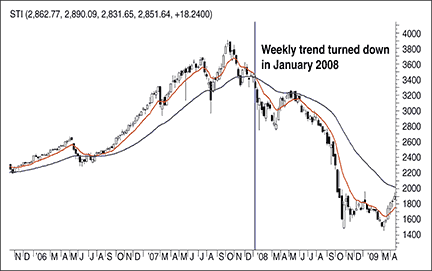INDICATORS
For Profit And Understanding
Trading, Time Frames, And Trends
Understand time frames and you will begin to understand the nature of the market and how to improve your forecasts.
Technical analysis is used to forecast future price trends. Many technical tools focus on the task of defining a trend. Not addressed adequately, however, is the issue of what kind of trend is being defined. Is it long term, medium term, or short term? Time frames are important for traders. After you establish the trend of the time frame you trade in, the next step is to relate that to the trend of the next larger time frame. For example, if you established the direction of the trend on a daily chart, you would look at a weekly one to confirm the direction of the trend. Understanding time frames will make sense of trends between two time frames, especially when there are opposing trends. When that is achieved, you can improve your market forecasts.
Time frame approach defined
It is a common practice for traders to look at markets in a single time frame. Traders typically focus only on the time frame they trade in, be it the hourly or daily charts. With the benefit of modern technology, charts are now available on time frames ranging from tick charts to five-minute ones to hourly, daily, weekly, monthly, and beyond.
The time frame approach is a technique where you analyze a market over two or more time frames. If you normally analyze a five-minute chart, you should analyze the hourly one as well. If you are a daily chart trader, you should analyze the weekly or even the monthly for comparison. This will help you better forecast the market and trade more effectively.

Figure 1: weekly chart of straits times index (sti) from march 2006 to march 2009. After a bullish rally in 2007, the weekly chart displayed a reversal in trend in 2009 when the 10-period EMA crossed below the 40-period EMA.